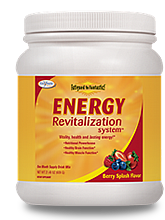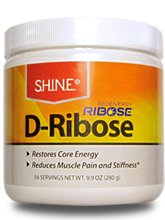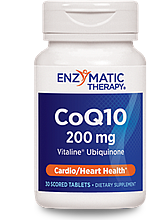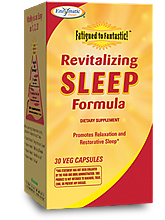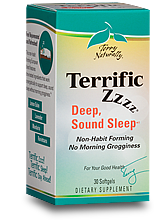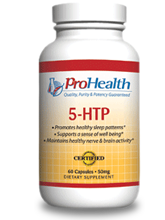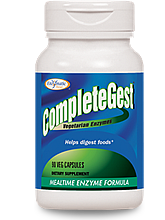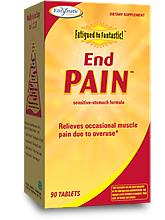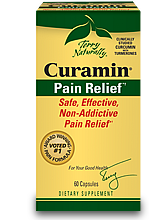Eliminating Fibromyalgia Pain
Fibromyalgia pain afflicts an estimated 6 to 12,000,000 Americans. Unfortunately, most physicians are absolutely clueless about pain management, and fibromyalgia is no exception. Although three new medications have been FDA approved for fibromyalgia pain (Lyrica, Cymbalta, and Minalcipran) these are not the most effective pain medications for fibromyalgia (simply the most expensive). In addition, the most effective way to limit fibromyalgia pain is to eliminate the underlying causes of the pain, using the medications as Band-Aids while going after these pain triggers.
Fortunately, fibromyalgia pain can now be effectively addressed
I can summarize most of what I was taught about chronic pain in medical school in one paragraph. Use Tylenol and/or SSRI medications. If the patient has cancer, you can use narcotics if you have to. If I had been a surgeon, surgical options might have been added. Although this may seem like a sad assessment, I suspect that most of you will find that this also has mirrored your experience. The good news is that you can get pain free NOW!
Pain is not the enemy!
We often address pain as if it is the main problem, like hypertension or diabetes, and forget that it is often simply an important indicator of other problems that need to be taken care of. In fact, pain can be viewed as the red, flashing, warning light on your dashboard telling you that something urgently needs attention.
Although chronic pain can be devastating, it serves a critical function. There is a horrible genetic disease that is uniformly fatal, leaving people horribly deformed and crippled. In this disease, people are born without any pain system, and therefore without any ability to feel pain. You may think this would be wonderful. It's not! As children, if they fall off a roof and break a leg, they have no pain and still try to walk — causing further damage. If their hand is on a hot stove or in a fire, they don't know it until they smell something burning. Pain is a critical warning system for your body. It tells you when you need to avoid something (or some activity) or pay attention to something so that you don't cause damage to yourself. In addition, it tells you when your body is not getting something that it needs (e.g., sleep, nutrients, oxygen, etc.).
So we know that pain is not the enemy — it is an important protective system. To simply mask the pain with medication would be like covering up the "low oil" warning light on your dashboard because it was annoying you. Therefore, in addition to teaching you how to turn off the pain signal, we will also help you understand what it is that the pain is trying to tell you your body needs. When pain becomes chronic, however, it causes more harm than good. When the underlying problems that need attention have been addressed, it is very important to turn off, or mask, any pain that still persists.
So how do I turn off the pain signal?
You turn off the pain by giving your body what it needs and by eliminating what is damaging or toxic to your body. For example, one of the most common types of pain in fibromyalgia is myofascial (i.e., muscle) pain. The medical profession, unfortunately, very poorly understands this type of pain. Although we might think that muscles will go limp or loose if they do not have the energy they require, consider rigor mortis. When someone dies and the muscles are not getting what they need, they do not get loose — in fact they become stiff as a board. Another example of this would be writer's cramp.
If your muscles do not have adequate nutrients, optimal hormone levels, or enough sleep for tissue repair, they will get stuck in the shortened position and cause pain. Underlying infections can also cause muscles to hurt and/or get stuck in the shortened position (consider the achiness accompanying the flu).
Pain is your body's way of saying that these problems need to be addressed. You'll be amazed at how even agonizing pain that has lasted decades can go away quickly when these problems are taken care of.
Using fibromyalgia as a model for widespread myofascial pain, our research team did a randomized double-blind placebo-controlled study in which we applied these principles to people with fibromyalgia. We found that hypothalamic dysfunction is common in these patients as well. As the hypothalamus (a small but major control center in the brain) controls sleep and hormonal function, this also contributes to disordered sleep and widespread hormonal deficiencies, despite normal blood tests. In the average patient, after two years of therapy, the average improvement in quality of life was 90%. Pain decreased by over 50% on average (P < .0001 for all 4 outcome measures). Most of the benefit was seen within 100 days of therapy (with marked relief often evident in under a month). After three months the majority of patients no longer even qualified for the diagnosis of fibromyalgia!
Often accompanying the muscle pain in fibromyalgia is nerve pain. This also responded excellently to the options we discuss in this article.
In addition, an editorial in the Journal of the American Academy of Pain Management noted that our protocol was an "excellent and highly effective part of the standard of practice for the treatment of fibromyalgia and myofascial pain syndrome."
In addition, pain management is a perfect place to combine traditional and complementary therapies. The difficulty that patients have finding doctors who can effectively address their pain has been a major problem. You can’t find a good doctor where you live, it is worth traveling so you can work with a physician who knows how to get you well.
Once you are addressing the underlying causes of the pain, it is very reasonable to use natural and prescription therapies to mask the pain. Once the causes of the pain are eliminated, these medications can often also be stopped.
Often, finding the right medication for persistent pain is like trying on shoes to see what fits best. In our current "medical shoe store" most physicians only have one or two pairs to try on. If they don't fit, the patient is out of luck. Fortunately, there are literally many dozens of both natural and prescription therapies to try, and when one doesn't eliminate the pain, another usually will.
So how do I address the underlying problems causing the pain?
As noted, there are usually 5 key areas that need to be addressed to eliminate muscle/myofascial pain. It helps to remember the acronym "S.H.I.N.E.®," which stands for:
- Sleep
- Hormonal support
- Infections/Inflammation
- Nutritional support, and
- Exercise as able (not more)
Let’s review the four key problems that pain is often trying to alert us about:
- Nutritional support. This is critical as pain patients are often deficient in numerous nutrients and may have poor digestive and bowel function. Because the western diet has been highly processed, nutritional deficiencies are a common problem. In addition, bowel infections can cause poor absorption, and the illness itself can cause increased nutritional needs. The most important nutrients include:
- Vitamins — especially the B vitamins (most at 25-100 mg/day), vitamin B12 (500 mcg/day), antioxidants and their precursors/cofactors (e.g., vitamin C and E, NAC, glutamine, glycine, cysteine, selenium, zinc, etc.).
- Minerals — especially magnesium, zinc, iodine and selenium.
- Energy cofactors (e.g., malic acid, inositol).
- Amino acids (proteins).
- A good multivitamin powder should include all of these things and supply an incredible foundation for nutritional support for almost everyone — including those with pain. We have even seen patients' chronic and severe pain go away (after 1 to 6 weeks) simply with this nutritional support.
- Another very helpful nutrient would be ribose. Our published study showed that in addition to increasing energy by an average of 45% in those with fibromyalgia, it also significantly decreased pain after three weeks of use. I recommend it be taken along with a good multivitamin powder (the vitamin powder and ribose are what I take each morning). The proper dose is 5 grams three times a day for three weeks and then twice a day.
- Although not needed for everybody, and usually only needed for three to nine months, there are a few other nutrients worth mentioning. Iron should only be given if iron deficiency (which I define as a ferritin under 40 and an iron percent saturation under 22%) is present. If the patient has dry eyes or dry mouth, I add fish oil. Coenzyme Q10 200mg/day can also be helpful.
- One of the benefits of seeing a holistic physician is the ability to get nutritional IVs (called "Myers Cocktails"). Getting one of these weekly for six weeks can dramatically speed healing and recovery from pain.
- Sleep.
- Because sleep is dependent on healthy hypothalamic function and pain also interferes with sleep, CFS and fibromyalgia patients frequently have insomnia — which is often profound. Many patients with pain find that they are unable to get the 8-9 hours of deep sleep a night that is critical to their getting well without aggressive therapy. Unfortunately, many of the most common sleep medications actually aggravate the sleep problems by decreasing the amount of time spent in deep stage 3 and 4 sleep. For patients to get well, it is critical that they take enough of the correct sleep remedies to get 8 to 9 hours sleep at night! Although 9 hours may seem like a lot, until 100 years ago the average night sleep in the USA was 9 hours a night!
- The best herbal/natural remedies for sleep/insomnia include extracts of Wild Lettuce (18-72 mg), Jamaican Dogwood (12-48 mg), Passionflower (90-360 mg), Valerian (200-800 mg), hops (30-120 mg), and Theanine (50-200 mg). All six are these are combined in an herbal supplement that promotes healthy sleep. It is excellent for insomnia, and it is all that many people who have mild to moderate insomnia will need. Unfortunately, the hypothalamic sleep dysfunction in CFS/fibromyalgia is so severe that it is usually necessary to have patients take a number of remedies together to get the 8-9 of sleep a night that is essential for getting well.
- Other natural remedies that help sleep are magnesium (250-500 mg) and calcium (500-600 mg), 5-Hydroxytryptophan (100-300 mg), and/or melatonin (3/10-1 mg) at bedtime. Some patients find that over-the-counter antihistamines such as doxylamine (Unisom for sleep) or Benadryl can also help. Medications that can be helpful (and which are usually also necessary in fibromyalgia) include Ambien, Trazodone, Flexeril, Neurontin, Lyrica, and doxepin. In the first six months of therapy, it is not uncommon for pain patients to sometimes need to take even 6-8 different products simultaneously to get 8 hours of sleep at night. My protocol contains a list of over 25 natural and prescription sleep aids that can help pain patients. After 6-18 months of feeling well, most people can come off of most sleep (and other) therapies. This approach is safe and critical to people getting well. Although with the insomnia seen in fibromyalgia it may seem impossible, experience with thousands of patients show that you can get your eight hours of sleep a night (with the proper help) and that getting adequate sleep helps remarkably in making the pain go away!
- Hormonal deficiencies.
- As discussed elsewhere, blood testing misses the vast majority of people who need hormonal support. Lab testing is simply unreliable. The most important hormonal deficiency to address for making pain go away is an underactive thyroid, and I strongly recommend a trial of prescription Armour thyroid (or better yet a compounded T4/T3 thyroid hormone mix) in virtually everyone with unexplained severe fatigue — especially if accompanied by widespread pain. As most physicians consider only the blood tests and not the patient, you'll need to see a holistic or integrative physician to get the prescription thyroid hormone you need.
- An exhausted adrenal gland can also trigger recurrent episodes of low blood sugar (also missed by standard testing) which can repeatedly throw your muscles into spasm. For those with a tendency to get very irritable when hungry, or have low blood pressure with dizziness on standing, I recommend adding an over-the-counter, natural herbal supplement that supports adrenal function. Bioidentical cortisol/hydrocortisone in extremely low doses can also be very helpful — and safe when used properly.
- Opportunistic infections. Because of the immune dysfunction, many unusual infections (e.g., fungal, parasitic, viral, mycoplasma, etc.) are often present. Some need to be addressed directly. Most clear on their own when healthy immune function is reestablished. Many studies have shown immune system dysfunction in FMS/CFS. Although there are many causes of this, I suspect that poor sleep is a major contributor. The immune dysfunction can result in many unusual and opportunistic infections. These include viral infections (e.g., HHV-6, CMV, and EBV), parasites and other bowel infections, infections sensitive to long-term therapy with the antibiotics Cipro and Doxycycline (e.g., mycoplasma, chlamydia, Lyme, etc.), and fungal infections. Clinically, we have found that Candida/yeast overgrowth is the most important infection to address (avoid sugar, and use probiotics, an herbal supplement that helps maintain healthy gut flora, and Diflucan).
Natural Therapies
Many natural therapies can be very helpful for pain. My 3 favorite pain-relieving herbals are willow bark, Boswellia, and cherry. All 3 of these can be found in combination in some herbal supplements that provides relief for muscle pain.
Although this excellent herbal mix may start working after the first dose, it dramatically increases in effectiveness after one week and even much more so at six weeks. It can be taken in combination with any other pain medications, and the dose of these medications can often be lowered after 4-6 weeks. Another benefit: side effects with these herbals are extremely rare. For more information on this herbal mix, see "Outstanding Herbal Pain Relief."
That sounds like a great way to address my pain! What else can I do to get rid of my pain?
The wonderful thing about comprehensive medicine, which combines holistic and pharmaceutical therapies, is that you have a full tool kit to deal with your problems. Otherwise, it's like going into a shoe store and having only 1 pair of shoes to try on. Using comprehensive Medicine, almost every one can find "a shoe that fits" so you can get your life and health back!
While going after and eliminating the underlying causes of the pain, it is perfectly reasonable to use pain medications to get pain free. The toxicity of chronic pain is far greater than the toxicity of these medications.
The main problem is that these medications can cause side effects, especially when started at high dose. It is reasonable to start with a higher dose if needed to get pain free quickly, but if the side effects become problematic, immediately lower the dose to the level that is comfortable (even if this is simply one half tablet daily at bedtime). As your body adapts to the side effects over a week or two, the dose can then be raised. Starting at too high a dose, without stopping and retrying at a lower dose in the face of side effects, is the major reason that people do not tolerate medications for pain that otherwise would be very helpful.
Three new medications have recently been FDA approved for addressing fibromyalgia pain. Although each of these medications can be a godsend in any given individual, they are not, in my experience, the most effective pain medications for fibromyalgia. Below I have listed the medications I recommend be tried for fibromyalgia pain in the order that I find them to be the most effective. Medications can often be combined, and it is reasonable to use a non-sedating medication like Cymbalta or Skelaxin during the day in combination with a sedating medication like Neurontin or Lyrica at bedtime.
Below is the order in which I recommend adding pain medications in fibromyalgia. It may take six weeks to see a medication's full effect, but usually you'll have a good sense of whether it is going to help by three weeks of use. Though it may take a high dose of a single medication (which may cause unacceptable side effects) to be effective, often combining a low dose of several medications will allow effectiveness without the side effects. Do not combine medications within a single group below, but rather add one from each group as you go along.
Order in Which to Try Prescription Medications for Fibromyalgia
Topical medications for small areas of especially severe pain:
For small areas of especially problematic pain, begin with one or both of these topical therapies. Give them two weeks to work, and they can be very effective — with virtually no side effects. I like to use the two of these together.
- The Nerve Pain gel or cream from a compounding pharmacy. Apply a pea sized amount to up to four areas 2-3 times a day and give it two weeks to work.
- Lidoderm patches — by prescription from standard pharmacies. This patch contains a cousin to Novocain (called "lidocaine") and can be applied over painful areas. You can use two to four patches simultaneously over different areas (a bit pricey so better if you have prescription insurance).
Medications by mouth:
- I usually begin with a combination of both of the medications below. If pain persists or side effects prevent the medications use, I then add one medication at a time from the next group, continuing down the list as needed.
- Skelaxin (metaxalone) — a nonsedating muscle relaxant (helps in about half of those with fibromyalgia) and
- Ultram (tramadol) — a medication which raises both serotonin and endorphins. Usually well tolerated at 50-100 mg three times a day. May be sedating and often causes nausea at doses over 300 mg. This excellent pain medication is available in generic form so is relatively inexpensive despite being highly effective.
- GABA Stimulating medications:
- Neurontin (gabapentin) or
- Gabitril (tiagabine).
- Serotonin and Norepinephrine raising medications (usually nonsedating):
- Cymbalta (duloxetine) 20-60 mg a day, or
- Effexor (venlefaxine) 75 mg 2-3x day, or
- Savella (Minalcipran) 100 mg a day.
- Medication with a GABA structure (though with possible other mechanisms of action):
- Lyrica (pregabalin)
- Tricyclic antidepressants — the first two are especially helpful for nerve/burning pain or pelvic pain syndromes (especially when combined with Neurontin or Lyrica):
- Elavil (amitriptyline) 10-25 mg at bedtime
- Doxepin (sinequan) — if the Elavil is too sedating or causes other problematic side effects — 10-25 mg at bedtime
- Flexeril (cyclobenzaprine) 5-10 mg at bedtime
- NMDA antagonists:
- Klonopin (clonazepam, addictive like valium) — helpful at bedtime for restless leg syndrome or severe muscle pain that interferes with sleep.
- Namenda (memantine) — not addictive. Especially helpful for allodynia (pain on being touched) and nerve pain.
- Codeine/narcotic family medications.
- These can be helpful but can also be addictive and therefore I prefer using the other medications we discuss. Nonetheless, these medications are sometimes necessary in a small percent of fibromyalgia patients, and I believe taking them is much less toxic for patients than being in severe pain.
- Other medications that can help fibromyalgia pain (usually not needed):
- Zanaflex
- Topamax
- Permex
- Celebrex
In the last 30 years, I have personally helped over 3,000 patients with fibromyalgia and other chronic pain conditions. I can count on my fingers how many were not able to get adequate pain relief. This has also been the experience of many other pain specialists that combine natural and prescription pain therapies, while using techniques to eliminate trigger points and the underlying causes of muscle pain.
You can get pain free — NOW!

Jacob Teitelbaum, M.D. is one of the most frequently quoted post viral CFS, fibromyalgia, energy, sleep and pain medical authorities in the world. He is the author of 12 books including You Can Heal from Long Covid, the best-selling From Fatigued to Fantastic!, Pain Free 1-2-3, The Complete Guide to Beating Sugar Addiction, Real Cause Real Cure, The Fatigue and Fibromyalgia Solution, and the popular free Smart Phone app Cures A-Z. He is the lead author of eight research studies and three medical textbook chapters on effective treatment for fibromyalgia and chronic fatigue syndrome. Dr. Teitelbaum appears often as a guest on news and talk shows nationwide, including past appearances on Good Morning America, The Dr. Oz Show, Oprah & Friends, CNN, and FoxNewsHealth.
Websites: Vitality101.com | EndFatigue.com
Facebook Support Group: Recovering from Fibromyalgia, Chronic Fatigue, and Long COVID
Facebook Page | Instagram
